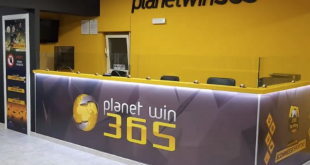 Ever since bookmakers took their business online they have always been looking for “the next big thing” to keep their customers happy, and fortunately the first decade of the new century gave them two very big things to add to their portfolios: poker and casino games.
Ever since bookmakers took their business online they have always been looking for “the next big thing” to keep their customers happy, and fortunately the first decade of the new century gave them two very big things to add to their portfolios: poker and casino games.
Indeed the gaming landscape changed dramatically when the two new products, developed back in the 1990s, went mainstream and spawned a number of dedicated brands, some of which – Party Gaming, 888 and Pokerstars –are still around today.
However the main effect of the arrival of new products was to allow bookmakers to change into online betting and gaming operators, and to not only diversify, but also to rid themselves of the financial peaks and troughs that are inevitable when you are at the mercy of smart punters and the occasional run of bad results.
By the end of the first decade of the new century every major online operator was offering the same products – betting, poker, casino/games and bingo – and was very often contracted to suppliers who provided the same software to all of their competitors. Brand and differentiation were now key to maintaining an edge.
Fortunately again the second decade of the new century has come up with another two “next big things”, both of which have also been in development for years. Anyone who has been in the business for some time will have tired of hearing about how “next year” would finally bring the boom in mobile betting. And similarly In-play betting had been on the verge of going mainstream more or less every year since 2000.
However it does now really seem that this year has given us a “Perfect Storm” of business for online operators, with the additional distribution channel “Mobile and Tablet” and the new In-Play product coming of age at the same time. The result: a surge of interest in live betting with a large proportion of transactions coming from smartphones and tablets. For many operators In-Play now accounts for the majority of online bets.
According to Gambling Data, UK GGR from online sports betting has been growing dramatically since 2010 when it increased by almost one third to top £550m, and then forged further ahead to reach €650m in 2011. A number of factors can influence such raw data, not least the effect of major sporting events and bookmakers’ margins. Unsurprisingly GGR again leapt during 2012 – the year of the Olympics and the European Football Championships – to €824m, an increase of a quarter on the previous year’s figures. According to the forecasts 2013 will see a rise of “only” 11% (to €917m), but for a year with no special events, this in itself is quite a feat.
Although an analysis of one set of data is by definition incomplete, and gives no indication of how operators based in Gibraltar and Malta are doing, or how well the traders have been performing in keeping margins healthy, the signs of a boom are very much there for all to see. Especially if you remember that there is supposed to be an economic crisis out there.
A look at markets where in-play betting is not possible – because of either heavy-handed regulatory environments, unworkable fiscal regimes, or both – reveals that the current sports betting boom is not being shared where both elements of the “Perfect Storm” are not available.
Italy is a prime example. Turnover based taxation of between 2% and 5% depending on the bet type ensures that In-Play is only a very small part of the online betting business, typically around 10% compared to 50% elsewhere. Here sports betting has been in decline for several years. GGR in 2012 was down over 20% year on year even with plenty of summer events (from €209m in 2011 to €167m). And this was no one off, 2011 recorded a fall in GGR of 2% compared with 2010.
Italy is not alone. France has also missed out on the boom (turnover tax of 8.5% and controls on betting offer), as has Spain with its tax of 25% of GGR and heavy handed control of the betting offer (recently scrapped).
Denmark, on the other hand, with its less onerous regulations and lower tax rate (20% of GGR), has seen strong growth since the market was opened up at the beginning of 2012. GGR in the first half of the year amounted to €550m, by H2 2012 this was up to €625m and in the first half of 2013 GGR was €705m. According to the Danish authorities, full year GGR in 2013 will be €1.4bn compared with €1.17bn in the first year. Experience of newly regulated markets elsewhere has suggested that, after an initial surge, growth tends to slow down drastically. In Denmark live betting and mobile have both contributed to an increase in activity.
Because of the very nature of the betting and gaming business, with its many small operators registered from Alderney to Curacao and beyond, available data – primarily sourced from regulators and annual reports of public companies – can only give a partial view. But ask anyone in the online betting sector what they think is driving their business forward and there will be few who will not mention the combined effects of mobile and of In-Play.
To some 2012 could well have been the year both mobile betting and In-Play already came of age, for others it will be the 2014 World Cup that will drag both centre stage, but, from the column inches dedicated to the two phenomena in the specialist media this year, it looks like 2013 is really the year the “Perfect Storm” transformed online operators’ fortunes.
___________________________________
Content contributed by Graham Wood – Director of iGaming Consultancy









